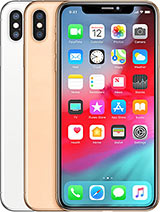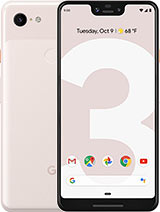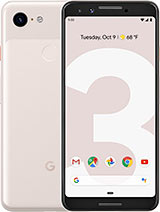iPhone XS Max vs Pixel 3 XL: Comparison Review By DetroitBORG
This video is sponsored by LastPass. What's up guys Mike here, the Detroit Borg take a look at the comparison of two of my favorite phones of the year, the iPhone 10s max versus the Google Pixel 3 XL. The first big difference between these two phones is pricing. $200 separates them, so the pixel 3xl starts at 899, while the iPhone 10s max starts at 1099. That gives you 64 gigs. To start you can double storage on the pixel of three XL to 128, for only $100 more but adding storage on the iPhone 10s max gets more expensive, but more generous.
The size of each device is almost identical. Both of them are 158 millimeters tall and around 77 millimeters wide iPhone, there's a bit heavier at 208 grams versus 184 grams and that weight difference probably comes down to the different materials they're using. So the iPhone is using stainless steel, while the pixel 3 Excel is using on the luminal frame. I have to say that weight difference is definitely noticeable. I actually really like the way the pixel feels, because it's so much lighter that's actually kind of important for a large screen device, especially since you spend more time sort of shifting the phone around to reach around on the screen.
Both of them have glass on the front and back which are curved at the edges. To meet the frame now what's kind of interesting is that the frame on the pixel 3 is coated. For this very glossy finish, while the iPhone 10s goes for a polished, stainless steel, it definitely looks quite a bit more high end, but that glossy finish looks quite nice, especially on the black pixel 3. The other benefit here is that this finish hides any of the antenna strip. So it looks a little neater, something that I really like about the glass on the pixel 3.
Is that it's etched on the back. So it gives you this sort of silky, matte texture. Again, the glass on the iPhone looks a little more premium because of that jeweled like mirror finish, which matches the stainless steel because of the glass back panel. Both phones have wireless charging, which is new for the pixel this year, and also both phones are ip68 water-resistant. Although the devices are roughly the same size, the 10s max does have a bigger 6.5 inch display over the 6.3 it's display, but the pixel 3 has a higher resolution display 1440 by 29 60 versus 1242 by 26 88, so that gives the pixel 3 a density of 523 versus 458. So it's a good thing.
Pixel is in the name now, once you get the pixel density above 400, it's actually hard to tell the difference so either way. Both displays. Looks extremely sharp. Both displays support, HDR, DCI, p3 and more so for the most part, the color balance looks fantastic and roughly the same on both of them. The only thing I noticed about the pixel 3 is that it's not quite as bright as the iPhone 10s max iPhone does have a few other technologies which the pixel 3 doesn't have, such as 120 Hertz, refresh rate for the touch sensor.
iPhone also has 3d touch, which is becoming less important, but again this is used for pressure sensitivity, so it's used in certain parts of the interface such as bringing up quick actions or the trackpad within the keyboard. But a lot of this is also done with just long presses on pixel. Another future iPhone is known for that. The pixel 3 is almost matching here is the tactic motor, which provides really precise, haptic feedback, so the pixel 3 almost matches the exact same haptic feedback as the iPhone, which I think is pretty surprising now. Certainly these displays look fantastic, but the design execution is quite different.
Obviously we don't have the uniform bezel surrounding the screen, like we do with the iPhone 10s Macs, so the pixel has a pretty prominent chin and that does leave a space for the stereo speaker. But even though we have a chin, the display goes all the way toward the top, which leaves us with a very prominent notch. That notch is quite a bit taller than we've seen from other phones, so it really stands out, but the one thing in its favor compared to the iPhone is that there's more space on either side, because it's not as wide now it's useful for Android, because you have the notifications in the upper left corner. So you want a little more space for those badges and the other advantage. Are you have more room for the battery percentage indicator, which is something you can't get on the iPhone? Each phone uses their notch for very different reasons, so the pixel uses it for a dual camera setup.
Both cameras are 8 megapixels one's a standard, wide-angle F, 1.8 aperture. The other is an ultra-wide F 2.2 aperture. So essentially you get a wide-angle lens for getting more people in your shot, but the iPhone uses this for the front-facing camera and face ID, which uses a bunch of sensors to map your face for authentication. One area where I think iPhone 10s has a clear lead over the pixel is biometrics so face. I'd is a much more frictionless way of authenticating passcodes making payments or just unlock in your phone.
Although the fingerprint scanner on the pixel 3 is fast and well-placed it's still quite a bit more cumbersome to use, especially since you have to be holding the phone a certain way in order for your finger to land in the right spot, and actually you can't be wearing gloves- and you can't do this hands-free now, it's somewhat available on what method is quicker to unlock your device. I, actually think that the fingerprint sensor can be quicker. Just because, if you place your fingerprint it unlocks right away, takes you right to the home screen, bypasses everything now with face on lock, you have to wake it up, scan your face and swipe to get home regardless of what biometric technology you prefer for security. Both work with LastPass so like everyone else, I have countless usernames and passwords to generate and remember, and that leaves us some bad habits such as writing them down or using the same password for every account. Obviously we know this is the wrong thing to do, because if just one password gets leaked, you have potentially compromised many of your other accounts.
Fortunately, LastPass has a solution for this by generating and storing all of your account passwords for you, the only password you have to remember is the one for your LastPass account. So this means you are free to use unique and complex passwords for all of your accounts, and the key reason I really like LastPass, is that it's cross-platform I can use it on both my Android phone, my iPhone, my Mac, my Windows machine and more and the great thing about LastPass, is that it works with autofill, so this works on both Android and iOS. So basically, this automatically fills in your username and password, and all I have to do is authenticate and that's where face ID or the fingerprint scanner comes in handy LastPass also supports multi-factor authentication. So if you really want to secure your LastPass master password, you can use services such as UV, key Microsoft and many more once again, I think LastPass for sponsoring this video and if you want to check it out yourself, make sure you click the link in the description below pixel 3 consolidates all of its buttons along the right side. So we have the power and the volume rocker, but the iPhone splits it between the right and left side.
But the pixel 3 has another feature that the iPhone doesn't, which is something called an active edge. So you can squeeze the phone in order to activate the Google Voice assistant and to activate Siri. You long press the power button, but of course you can also command the voice assistant, whether the phone is locked or not at the bottom edge, we'll find something else. These devices have in common, which is the lack of a headphone jack, but at least the pixel 3 still includes a headphone jack adapter in the box which the iPhone gave up, but otherwise things are quite a bit different down here. So we have USB-C versus lightning.
For the phone 10s and of course we have these down facing stereo speakers and microphones on the iPhone 10s, which we don't have on the pixel, and that's because the pixel has front-facing stereo speakers, one in the earpiece and one in the chin. iPhone also has zero speakers, but only the earpiece actually faces the user. Now I could spend a lot of time talking about these speakers, but for the most part they're just as loud as each other, so I was able to get about 91 decibels at best, but there's a big difference in terms of sound quality. The iPhone speakers are a bit better balanced, so they sound the same on the top and bottom. While the pixel three clearly has a much louder speaker at the bottom of the phone than at the top pixel three definitely has more bass, in fact, the entire phone vibrates, but also adds to this sort of muffled sound to the phone that they don't really care for, but the audio on the iPhone sounds spotless and precise.
So there's no background noise, no distortion, it's just nice and clean, but it's probably not the best film. If you want to listen to music from a distance in terms of specs, both phones get four gigs of RAM, which is kind of low on the Android side, but that's pretty high for iPhone, but in terms of performance. Overall, there's a pretty big difference here and that's because we have that powerful aid, 12 CPU in the iPhone 10s max, so we're seeing double the single core score of the snapdragon 845 in the pixel 3 I'm, always reluctant to talk about Barre life just because it varies so much depending on the software you're running background processes, screen brightness and much more, but the pixel 3 does get the biggest battery here.3430 William hours versus 3000 174 for the iPhone 10s max generally speaking, iPhone is much better at consistency. The pixel 3 can have great battery life one day and then get zapped the next day. So it really depends again on the background amps, but, generally speaking, I do get all-day battery life with at least 6 hours of screen.
On time now, I'm not going to do a detailed software comparison just because I could go on for hours, but there's a few features that pixel 3 has I, wish I phone hand. So, for example, we have the always-on display, which will persistently show you your date time, notifications, weather and more, but the most significant feature missing on iPhone is split screen mode. So you can open up two apps side by side on Android. We even have a picture in picture mode for our video player, so, for example, YouTube I could play a YouTube clip while navigating through the interface all without leaving the YouTube viewer for the most part, Android 9 and iOS 12 have quite a bit in common in terms of their interface convention. So the way you interact with each phone is actually surprisingly similar.
Now, although Android 9 still has a classic home, but we still have a gesture based interface for basically everything else. So, for example, you swipe up quickly to get to your recent apps viewer, and you swipe up further to get to the app drawer. You can also swipe across the bottom of the screen to navigate through your recent apps. Moving on to the camera. Comparison obviously there's a big difference here in terms of hardware, but the differences are as big as you think.
So. The iPhone has two 12 megapixel cameras, one with an F, 1.8 aperture and that's the wide-angle lens, and then we have a telephoto camera with an F 2.4 aperture with 2 X optical zoom. Both of them are optically. Stabilized pixel 3 gets a 12 point, two megapixel wide-angle lens with an F 1.8 aperture, also with optical image stabilization. So because the iPhone has 2 X optical zoom, you do get better zoom quality on the iPhone, although some computational magic on the pixel means you get pretty good quality as well with just digital zoom, because we have these dual cameras.
We have depth perception which the camera can use for portrait modes, so this allows iPhone to more accurately detect the distance between the foreground and the background. So not only can I phone simulate a shallow depth of field. You can even change the depth of field before or after you've taken the photograph. The effect even changes, the optics of the both in the background, pixel 3 also has a portrait mode but uses more computational methods like facial recognition to achieve a similar effect. Although you don't get the same features as iPhone, the effect is relatively similar, although not as accurate, so you still run into issues at the perimeter of the foreground, subject which iPhone has largely overcome.
Now, if you have well-lit images, both cameras behave very similar to each other. We get the same dynamic range, the same shallow depth of field, the same color profile and for the most part, these same sharpness, iPhone does get a new feature. This year called smart HDR, which tends to reduce contrast more than the pixel but brings up shadows softens, highlights and tends a warm-up, color saturation, so it tends to make images look sharper than pixel, but some tend to think it looks over processed and flattened pixel. HDR generally does a better job, preserving the dynamic range of an image, even if I think most people will prefer the detail and color from smart HDR, like all smartphones, the true test of a camera. Where is what it does in low-light, and these phones couldn't be more different.
Smart HDR on iPhone once again does a great job, bringing up shadows, softening highlights and bringing up the color without over saturation or color. Noise pixel, on the other hand, tends to ramp up saturation, while also preserving contrast and low-light detail, without flattening the image as much as iPhone I definitely tend to favor what the pixel does, because I like the dynamic range and color vibrancy, even if the color profile tends to be somewhat inconsistent or unnatural, and there tends to be more color noise or distortion in the image. I do think iPhone does a better job producing a clean image which you can edit later, but the pixel goes a big step further with a feature called a night sight. This mode behaves a little like a long exposure mode and prompts you to hold steady while it's capturing the image, but the results are truly remarkable. It's literally the difference between night and day and something iPhone certainly can't do inside the camera app.
It brings up detail you had no idea was in the image and, what's truly remarkable is the way it finds color in an image, especially when there's no light to begin with most long exposure modes tend to over saturate, but nitrite manages to preserve a natural color range, which is a big part of what makes these images so stunning in terms of video. Both of them are excellent. Both support 4k, but only the iPhone doesn't at 60 frames per second side-by-side. I, definitely think the iPhone looks better its sharper and brighter with better color saturation, but side-by-side. You can see, there's a big difference in terms of stabilization, so as I'm walking, you can clearly see the bouncing with the iPhone 10s max, but with Google.
It's completely smooth down almost to the point that looks like it's on a gimbals. So again, that's not really optical stabilization. Doing that that's electronic stabilization and Google definitely has that computational magic going on in terms of the front-facing video they're, actually pretty similar. Overall, we have 1080p video recording, but the iPhone does it up to 60 frames per second versus 30 frames per second only for the pixel. Generally speaking, exposure is pretty good, but the iPhone seems to have an edge overall.
As you can see, the exposures are through. The windows are quite a bit more evened out for the iPhone. You can actually see better through the windows and, as you can tell, the stereo microphones on the iPhone sound quite a bit better than those on the pixel. Alright, guys hope you enjoyed this comparison, video. This is something of an experiment for me.
Normally I don't like to do comparisons, but I thought it was pretty interesting because I think these phones are pretty equally matched even though they're very different in terms of their platforms. Hopefully, I did not upset anybody. I don't want to be controversial. I want to be fair to these devices. So if I've done something that you think I should have done differently, please let me know in the comments section below and if you guys like this video and would like to see more comparisons in the future.
Please let me know with a like, and I'll see you again in my next video.
Source : DetroitBORG



























